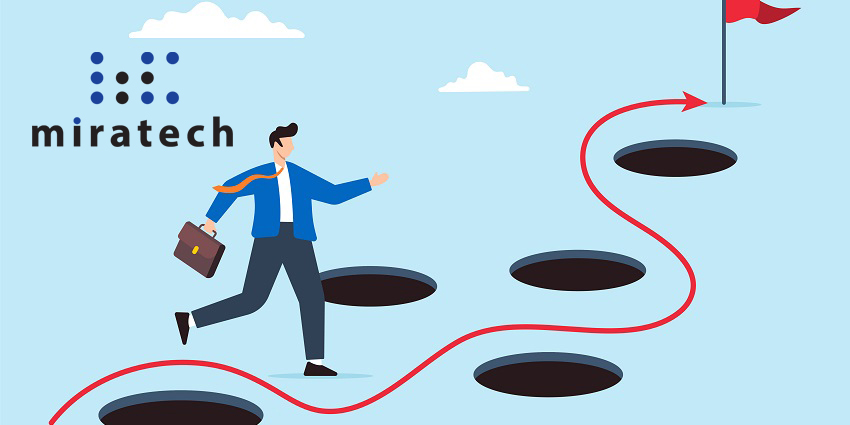From a CX stalwart battling its way past bankruptcy to more exciting generative AI announcements, here are some extracts from our most popular news stories over the last seven days.
Avaya Wins Approval for Its Plan to Exit Bankruptcy
Avaya will soon exit Chapter 11 Bankruptcy, with Judge David R. Jones stating that he will approve its plan.
Once initiated, the plan will wipe $2.6BN of its debt, which stood at $3.4BN before the filing.
The remaining $800M is due in 2028, with the agreement freeing up over $650M in liquidity for Avaya to invest in its solutions and services.
Avaya may do so after it officially leaves Chapter 11 protection, which it intends to do in the coming weeks – according to a lawyer representing the vendor.
The move shouldn’t impact the support and services Avaya offers its customers and partners.
Upon the announcement, Alan Masarek, CEO at Avaya, stated:
We embarked on this process with a clear goal – to create a stronger financial foundation that enables us to build on our competitive industry position, strengthen our partner ecosystem and better meet the needs of our customers with further investment in our cutting-edge, long-range product roadmaps.
Unfortunately, Avaya has been here before, filing for bankruptcy in 2017. As such, many will question its long-term viability.
However, Avaya will avoid much of the scrutiny it has endured in recent years when it exits bankruptcy, as it will become a private company.
The Latest on Bard, Google’s Answer to ChatGPT
Google has offered some of its US- and UK-based Pixel superfans early access to Bard, the business’s retort to ChatGPT.
The select users can try it out and offer feedback to train Bard in real-life use.
Those without an exclusive invite can sign up for a waitlist for when Bard reaches the next stage of its rollout.
What Is Bard?
Like ChatGPT, Bard is a generative AI engine powered by LLMs, including Google LaMDA.
Many may remember news swirling around LaMDA last year when a Google employee raised concerns that it may be sentient.
Nevertheless, Google continues to test and finetune the model, which this next stage of the rollout will help with.
As it does so, Google is tagging Bard as a predictive engine, generating replies to user prompts.
In a way, the search engine leader already offers similar capabilities. Consider how it suggests ways to finish a sentence in Gmail and Google Docs.
However, Bard promises to be much more advanced. Indeed, it answers user questions, helps users to generate ideas, and makes lists.
After receiving a response, users can ask follow-ups to delve deeper and engage in a fully-fledged conversation, as Bard maintains conversational context.
InMoment Releases an “Industry-First” GPT-Fuelled Innovation for VoC
InMoment claims to have become the first VoC vendor to leverage the power of ChatGPT, integrating OpenAI’s technology into its XI Platform.
The new technology will enable businesses to automatically summarise hundreds of customer comments into a short overview, as well as create survey feedback examples to enhance text analytics models.
Sandeep Garg, Chief Product Officer at InMoment, said: “We’ve all seen recent headlines around personal use of ChatGPT, but what isn’t being talked about nearly enough is the new opportunities generative AI brings to enterprise software applications worldwide.
At InMoment, we immediately identified the opportunity to leverage the power of this technology to solve real-world business problems for our clients.
InMoment has created what it describes as a “first-of-its-kind- technology” via its ChatGPT-powered Smart Summary Generator.
Using AI technology, the Smart Summary Generator turns hundreds of disparate feedback from customers into a well-written, well-structured, and concise text that makes it easy to find the important issues and trends reported by customers.
The speed of this automated operation enables companies to respond quicker than ever to information gathered from customers.
According to InMoment, it takes just minutes for the summary generator to transform customer comments into an actionable overview.
The solution creates automated customer feedback across various channels, such as contact center interactions, reviews, and surveys.
Diving Into Adobe’s Real-Time CDP Updates
This Wednesday, at its yearly Digital Experience Conference, Adobe announced updates to its Real-Time Customer Data Platform (Real-Time CDP) that provides experience-led growth via buyer insights and personalization data.
Adobe’s update includes 600 billion predictive customer insights for its enterprise end-users which track and convert real-time customer data to ensure increased engagement during the buyer’s journey.
Moreover, the new Real-Time CDP data insights enable improved B2B account-based marketing and personalization via online shopping behaviors, prospecting, and conversion rates.
Anjul Bhambhri, Senior Vice President of Adobe Experience Cloud Platform Engineering at Adobe, also added:
Adobe Experience Cloud applications, from Adobe Real-Time CDP to Adobe Journey Optimizer and Customer Journey Analytics, work together to help brands drive the next phase of their digital transformation, which will be anchored in wide-scale personalization.
“In a hyper-competitive economic climate, where consumers now re-evaluate the products and services they buy each day, a brand’s key long-term growth driver is the ability to show people you accurately understand their current needs.”
Real-Time CDP allows brands and businesses to leverage scalable, one-to-one personalization tools within a unified management platform, and according to Adobe, its platform attracts around 30 trillion audiences daily, providing ever-growing experience-led personalized campaigns.







